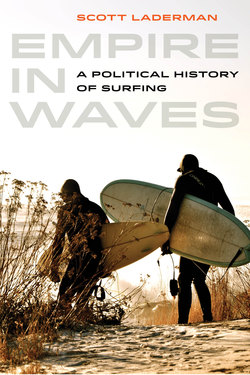Empire in Waves

Реклама. ООО «ЛитРес», ИНН: 7719571260.
Оглавление
Scott Laderman. Empire in Waves
Отрывок из книги
Empire in Waves
Edited by Susan Brownell, Robert Edelman, Wayne Wilson, and Christopher Young
.....
The islands, after all, were no easy sell. The Hawai‘i of the early twentieth century was not the Hawai‘i of the post–World War II era. The promotion of tourism thus came to play a useful role in encouraging the arrival of that “white population so badly needed” in the American territory. The logic was impeccable. “[A]s California and Oregon and Washington have learned,” a representative of the Marshfield [Oregon] Chamber of Commerce told his hosts during an official visit to Honolulu in 1911, “the tourist of today is the taxpayer and resident of tomorrow.”73 Or, as the Hawai‘i Tourist Bureau stressed while “induc[ing] travelers to visit us,” “we cannot emphasize too strongly the fact that Hawaii is not only a wonderland to visit but[,] far more important, an ideal country in which to establish a residence.”74 Tourism, in other words, would be an important first step in enticing white settlement.
And surfing, with which Ford became obsessed, might go some distance in encouraging this effort. Having learned to “ride standing” just months earlier, in 1908 the former South Carolinian founded the Outrigger Canoe Club on the beaches of Waikiki. The club, which quickly began to “flourish,” soon emerged as an important social venue for the islands’ haole elite, with its membership rolls populated by judges, political leaders, and many of Hawai‘i’s leading businessmen.75 Ford was its first elected president; the annexationist Sanford B. Dole was its second.76 There is a good deal of uncertainty about precisely how the Outrigger came about.77 There is less doubt, however, about why it was created. The “main object” of the club was “to give an added and permanent attraction to Hawaii and make Waikiki always the Home of the Surfer, with perhaps an annual Surfboard and Outrigger Canoe Carnival which will do much to spread abroad the attractions of Hawaii, the only islands in the world where men and boys ride upright upon the crests of the waves.”78 Or, as Ford wrote in 1910, the club began when “several malihinis, or newcomers, . . . recognized the picturesque charm to the tourist of surf-board riding, an art that was rapidly dying out owing to the fact that Waikiki beach was becoming closed to the small boy of limited means.”79 Given the steady construction of beachfront hotels and residences, the Outrigger would ensure coastal access to people of “limited means.” This ability of locals to reach the water would encourage the practice of surfing, which in turn, Ford believed, would attract free-spending tourists to Hawai‘i. And he was right. The tourists did show up, though Ford would later come to rue his success. Surfing, he wrote in 1931, had been “one of the greatest assets toward bringing the confounded tourists to our over hospitable shores,” where they were becoming a “nuisance” and a “calamity,” though an “inevitable” one.80 But this frustration was years away. In 1908 the future looked bright.
.....